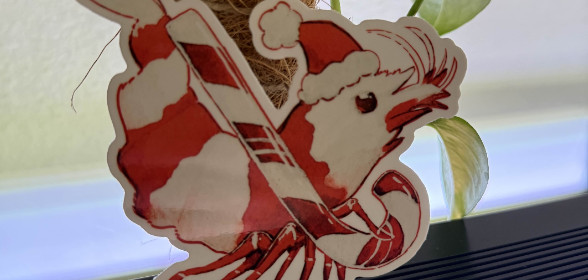
You can now add tags to your profile — including our special FISH tag to rep the FishWiki community! 💙
How To Add It:
- Join our server
- Click your avatar → Edit Profile
- Scroll to Tags
- Add FISH and save!

Hey there fish keepers! Are you looking for a community of like-minded individuals to share your love for all things aquatic? Look no further than FishWiki!
FishWiki is the ultimate destination for anyone interested in aquaculture and caring for their finned friends. With a vibrant community of dedicated fish lovers, you'll be able to connect with others who share your passion for these amazing creatures. Plus, with a variety of controlled channels and beginner guides, there's always something new to learn and discover.
But that's not all! FishWiki also offers a wide range of channels and resources related to aquariums, fish, invertebrates, amphibians, aquascaping and more, making it the perfect place to connect with others who share your interests.
So why wait? Join FishWiki today and become a part of the fish-keeping community on Discord!

You can now add tags to your profile — including our special FISH tag to rep the FishWiki community! 💙
How To Add It:

Fishmas..I mean...SHRIMPMAS IS HERE! For December we will be giving out CRS shrimp stickers to our lovely boosters, & we will be giving 5 shrimp stickers out.
If you are boosting please open a ticket and if not join the giveaway by joining our Discord Server! - New & Current boosters can get this sticker
Happy holidays, everyone! For the month of December—and in the spirit of Fishmas—I wanted to let you all know that we’ve partnered with several talented creators and brands to bring you all a special giveaway! We’ve got awesome brands like Fluval and Aquatop joining us, as well as the team behind Fish Game. We’re also excited to welcome two more fantastic businesses to this event: Tropical Fish Co. and Blackwater Aquatics. I’d like to give a huge thank you to the small hobbyist breeders and artists who will be taking part as well!
Down below, I’ll include everything that’s being given away, along with links to each contributor in case you want to spread some Fishmas cheer their way!
I also want to mention that Fluval will be hosting their own Holiday Wishlist contest. Five winners will be chosen at random, and you can find all the details you need in the included YouTube link. youtu.be/xg0SQyvx-Qo
Disclaimer: For anyone participating in the livestock giveaway, please make sure you’ve done proper research and have suitable homes ready for any fish you may receive. Livestock and Gift Cards restricted to US only. Fluval
In the event of product unavailability, a product of equal or greater value will serve as a replacement.
TikTok: www.tiktok.com/@fluval_aquatics
Instagram: www.instagram.com/fluvalaquatics
YouTube: www.youtube.com/@fluval
Aquatop
1x AQUATOP Pro AC/DC Air Pump, Dual Outlet - USB Rechargeable for Emergency Backup, ACDC-PRO2
1x AQUATOP Submersible Filter w/ 7W UV, 126 GPH for Aquariums up to 75-Gal, SP7-UV
Instagram: www.instagram.com/aquatopaquatics
Blackwater Aquatics
1x Male Betta Imbellis
1x School of 6 Ornate Tetras
Instagram: www.instagram.com/bwaquatics
Main Website: bwaquatics.com
Tropical Fish Co
3x 100$ Gift Cards (One gift card per winner)
Youtube: youtube.com/@tropical_fish_co
Instagram: www.instagram.com/thetropicalfishco
Main Website: tropicalfish.co
Fish Game
3x Steam Keys for Fish Game
Steam: store.steampowered.com/app/1372150/Fish_Game
Website: fish.game
WeeksWeeks
2x Pair of Betta Channoides (One Pair per winner)
2x Epiplatys species TBD (One fish per winner)
1x Pair of Argolebias nigripinnis Ethical Axolotls
1x Axolotl
Facebook: www.facebook.com/ethicalaxolotls
Main Website: ethicalaxolotls.com
Athanon1247
1x Neocaridina Art piece
www.instagram.com/athanon1347
Bettasnack
2x Crocheted Squids (One per winner)